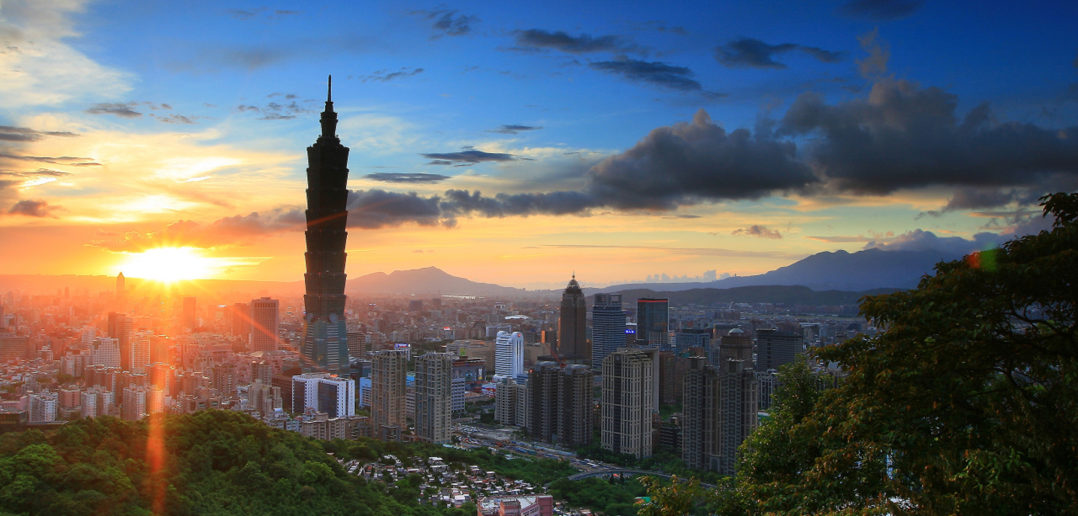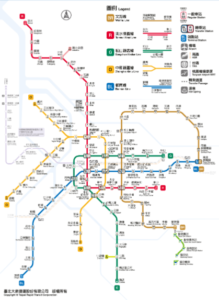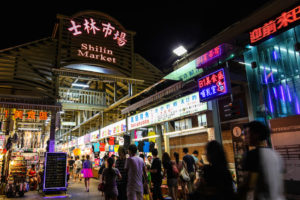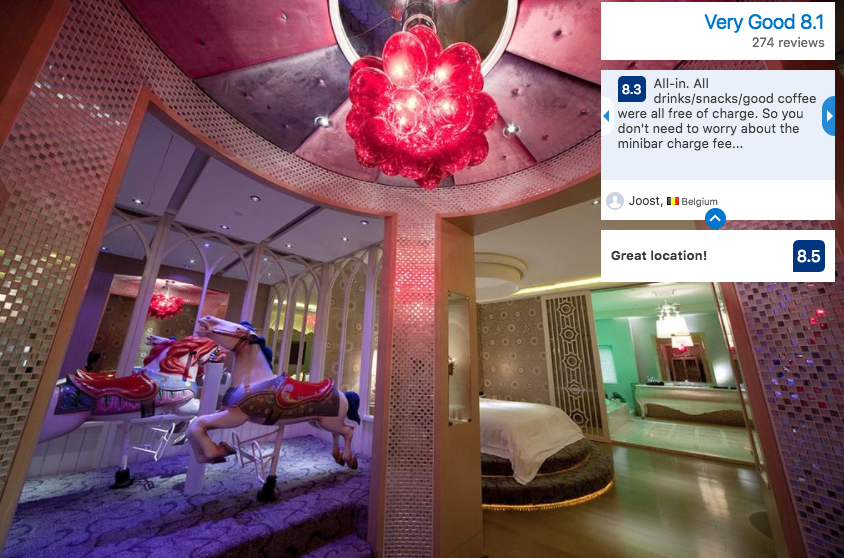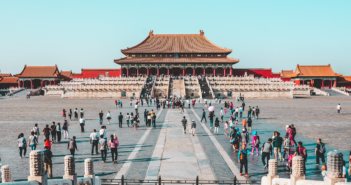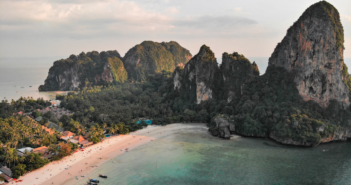Taipei on the northern tip of Taiwan is the Island’s capital. This article is my travel guide to help you get the most out of your trip to Taipei.
Taipei is modern, vibrant city steeped in history and culture. It has grown up with Chinese, Japanese and American influences and therefore the city is ordered, clean and is more comparable to Hong Kong than any other city in mainland China. With is colonial lanes, busy streets and contemporary buildings. The people of this city are educated, polite, speak Mandarin and use traditional Chinese Characters.
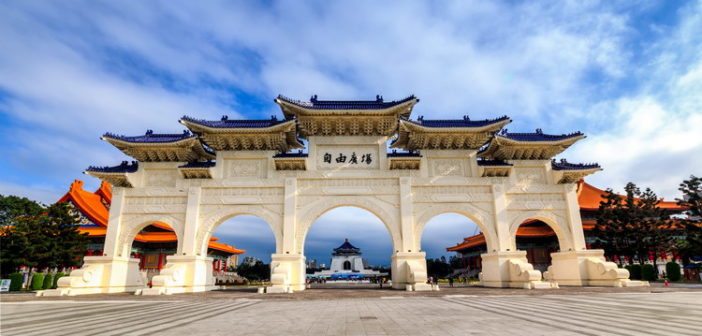
Travelling to Taipei
Before you plan your trip to Taipei or indeed Taiwan you should first check the weather. Taiwan has a monsoon climate, and so picking the wrong season could mean that your trip is a washout. Torrential rains and strong winds can take the shine of seeing any tourist site.
Late Autumn and Spring are generally good times to visit. Summer and early Autumn would be best to avoid due to regular downpours. Temperatures during the summer reach 40° so if you’ve no choice but to visit during that time bring both an umbrella and sun screen.
For those overly concerned with the weather check with the site of the Central Weather Bureau this not only covers weather but also provides advice on what to do under dangerous conditions from earth quakes to extreme weather. Download the app here for the iPhone and Android.
Like the Chinese Mainland Taiwan uses the lunar calendar celebrating the the New Year and Mid-Autumn Festival.

Airports serving Taipei
Getting to Taipei
As you would expect with its status as Taiwan’s capital Taipei is well connected and served both domestically and internationally. Taiwan Taoyuan International Airport is the largest airport in Taiwan approximately 52 km from Taipei. Getting to and from the airport usually takes 45 mins. Another option closer to the city is Songshan Airport. Songshan airport is only 4.5 km from Taipei and is only a 20 minute journey into the city. However, this airport is less well serviced and has fewer international connections.
Traveling from Taiwan Taoyuan International Airport to Taipei can be done by bus, fast train, taxi or MRT.
- Bus, is the cheapest option, costing from 90 to 145 NT$: Most services go to Taipei Main Station, City Hall, MRT stations and various hotels. Information on buses from can be found here.
- Fast train (Gaotie 高鐵) from the Taoyuan HSR (High Speed Rail) Station. The problem with this option is transfers and waiting times may result in the bus option being the better choice. Fast train tickets can be booked online at the official site or using the Klook service up to 28 days before the trip.
- Private Taxi, costs will vary between starting from 800 and 1200 NT$ depending on traffic and destination in Taipei. A well organised traveller might have this option prearranged with your hotel.
- MRT train connects the airport to central Taipei Main Station. See the downloadable map of Taipei’s subway system above. Both express and commuter services run from 6 a.m. to 11 p.m each day. The MRT takes 37 mins and costs NT$ 160. One benefit at least for the return journey in addition to the speed is that it offers an advanced check-in service. This service is available up until three hours before your flight’s departure time for passengers without special requests. For those flying into Songshan airport this is the best option. The MRT station at Songshan airport is outside Terminal 1. behind the bus stop.
Getting Around the City
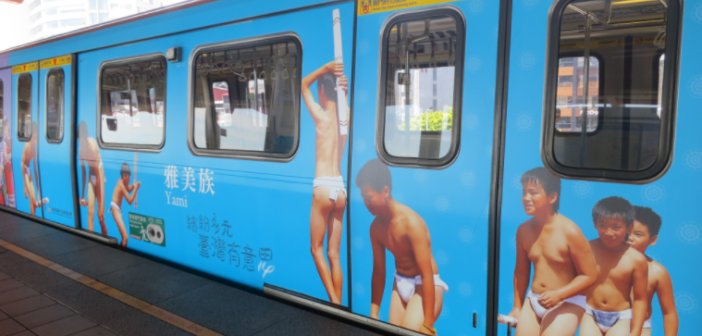
MRT Taipei
Getting around Taipei is easy. The cheapest and most fun way to explore the city is by bike combined with the metro. Getting public transportation cards on arrival makes this process much easier. The following are the most suitable for tourists.
- EasyCard: covers all public transport and can be bought at any (7/11, Family Mart, OK, Hi-Life) and of course metro stops. They can be recharged, and are even reimbursable. You’ll need an EasyCard if you wan to take advantage of the cities public Youbikes. For the Youbikes you will need to register your easy card and also have a local mobile number. Here’s an article on how to rent Youbike in Taipei. For other bike rental options and ride maps check Biking in Taiwan.
- Taipei Pass: is directly aimed at tourists. Depending on your length of stay, you can choose to buy a daily or multi-day pass (24, 48 and 72 hours, for 180/280/360 NT$; or one day, two, three, five days for 180/310/440/700 NT$). The Taipei Pass is valid for buses and the metro from the first use until the end of the specified time they are NOT valid for Youbikes or public bicycles). If you want to use these along Maokong Gondola you’ll need to buy an extension. Passes are found at metro stations, at the EasyCard office at the Taipei Main Station, or online.
Taipei’s Metro (MRT)
As of 2018 5 MRT lines service Taipei and its periphery that are open from 6 a.m. to midnight, a single one way ticket costs NT$ 25. The cool thing about this subway is that you can bring your (rented) bike providing you pay for a ticket.
Check the subway map here.
Bus
What is the Taipei Bus?
Taiwan’s public transit system is extremely well developed, especially in Taipei where it covers practically every possible destination with relatively few transfers. Along with the Taipei MRT, the bus system accepts the EasyCard and provides an excellent, convenient way to get around the city.
Most buses are bilingual in Chinese and English, however, the bus system is not as standardised as the MRT. The bus system operated under cooperation between 15 private agencies, so translation and romanisation is not always consistent. It is recommended to always keep a Chinese written version of your destination for comparison.
Buses in Taiwan are commonly referred to as gōngchē (公車), compared to mainland China’s gōngjiāochē (公交车).
Bus Transit Lines
For visitors, it is more practical to first look up the route you wish to take (by using a guide or Google maps, for example), then directly take that route, rather than try to understand the inner workings of the system.
It is also important to note that if a route contains a colour marker with a letter or Chinese character (like R or 紅 for red, etc.), that route will eventually pass by an MRT station along the red line.
How to Purchase a Ticket, and What is This 上 and 下 About?
Fares are calculated using a fare zone system. Most busses have three distinct fare zones. If the bus is showing a 上 (pronounced shàng, “on”) character, pay NT$15 by cash or EasyCard upon boarding the bus. If the bus is showing a 下 (pronounced xìa, “off”) character, pay NT$15 by cash or EasyCard upon alighting the bus. If you are on the bus when the 上 (first zone) switches into a 下 and enters the third zone, pay a second time when alighting because you have crossed into another fare zone. You do not need to pay again if still in the second fare zone. The fare zones are indicated by small triangles on the route maps. The safest method is to swipe an EasyCard. If you do not have to pay fare again, the machine will simply reject the swipe.
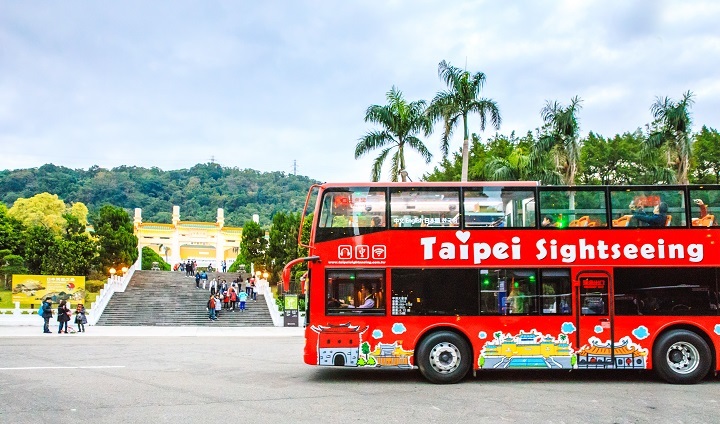
Hours of Operation
Each bus company has a different schedule for each route. In general, the first busses depart around 5AM and the last busses between 10PM and 12AM midnight.
To view specific information about line and route info, and to visit the Taipei eBus Website, click here.
Tourist buses
For city tour buses check this site. This company in tandem with the Taipei City Government offer double decker sight seeing tours which are convenient and easy to use. You can easily buy a ticket that allows you to hop on and off at your pleasure. It even has audio guides!
Taxi
Taxi’s in Taipei are easy to catch, clean and well serviced. But definitely more expensive than mainland China.
- The flagfall is NT$70 for the first 1.25km plus NT$5 for each 200m thereafter. From 11pm to 6am there is a surcharge of NT$20 on top of the fare.
- You can find yellow cabs all over the city and at all hours, but drivers may not be able to speak much English.
- Call the taxi hotline on 0800-055 850 (wait for the message and press 2; on a mobile phone call 55850). Call 02-2799 7997 for English-speaking drivers.
Bicycle
Taipei, is an excellent option if you enjoy biking. You can rent bikes easily with your EasyCard, but as I stated earlier you’ll need a local telephone number. Here are some lists of itineraries and a city map with highlighted routes, to help you get started.
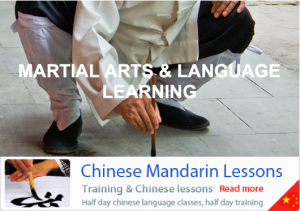
Cable car
The cable car connects Taipei Zoo to Maokong. As a tourist activity it is well worth it. From the cable car you will be able to see spectacular views in particular Taipei 101 and Zhinan Temple.
The downside to the cable car is its popularity. Therefore you should expect long cues. Going early in morning is through the week is a good option because at weekends it is particularly busy. Taking a taxi up then going down by cable car is also a great option to outsmart the crowds.
Money and Visas
New Taiwanese Dollar (NTD or NT$) is the local currency which can be easily withdrawn from any ATM’s with Visa, Mastercard or Unionpay. In terms of visas make sure you have a valid passport with at least six months left and a return ticket. If so your visa can be issued on arrival. To check if you need a visa in advance click here.
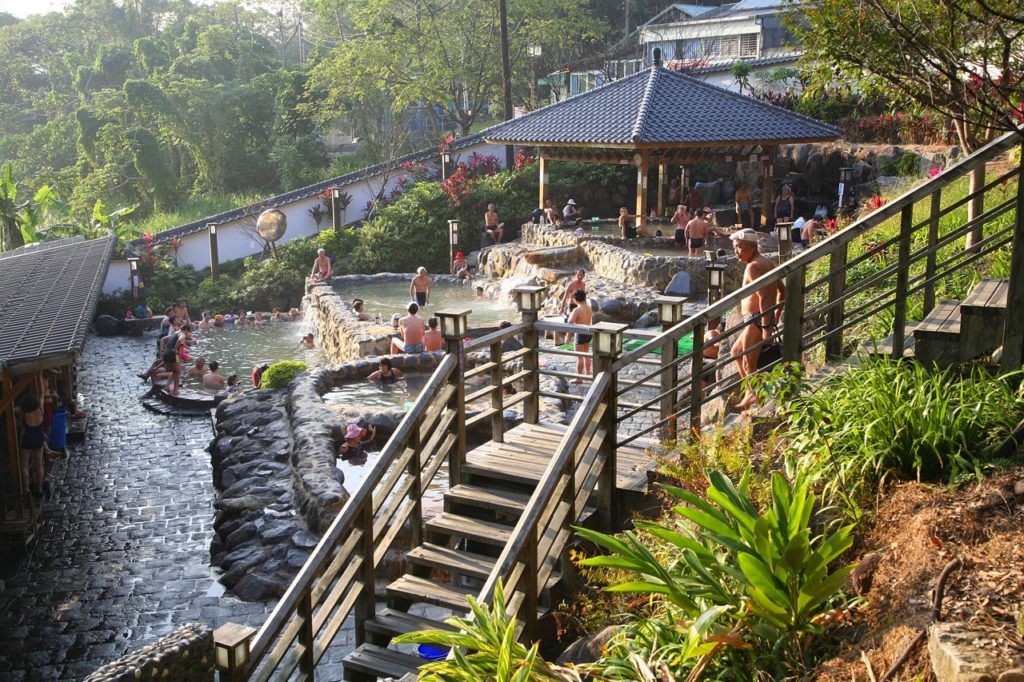
Tourist information
Tourist information is now easier than ever to get your hands on. A travel app for Taipei, can be easily downloaded with a calendar of events and info on tourist attractions. You can download the travel app for iPhone or Android very easily.
Taipei Highlights
- National Palace Museum (Guólì Gùgōng Bówùyuàn國立故宮博物院): here you’ll find all that was preserved when Kuomintang fled mainland China. This museums is better than any in mainland China. Tickets costs 250 NT$. To get there you’ll first need to get to Shilin (士林) stop on the red Line 2, then look for Bus R30 (紅30) on the same side of the street (there’s one normally every 30 minutes or less).
- Chiang Kai-shek Memorial Hall (Zhōngzhèng Jìniàn Táng中正紀念堂) or CKS Memorial Hall: The park (Chiang Kai-shek Memorial Park 中正紀念公園) is very popular especially in the morning and is a great place to see taiji players. The complex also includes a theater (National Theater 國家戲劇院) and a concert hall (National Concert Hall 國家音樂廳). Line 2 red or Line 3 green to Chiang Kai-shek Memorial Hall (中正紀念堂).
- Taipei 101 (台北101): a source of great local pride, the skyscraper is earthquake proof and ecologically sustainable; its shape bears homage to a bamboo plant and inside you’ll find a very popular shopping mall and views over Taipei (Taipei 101 is open from 10am to 10pm).
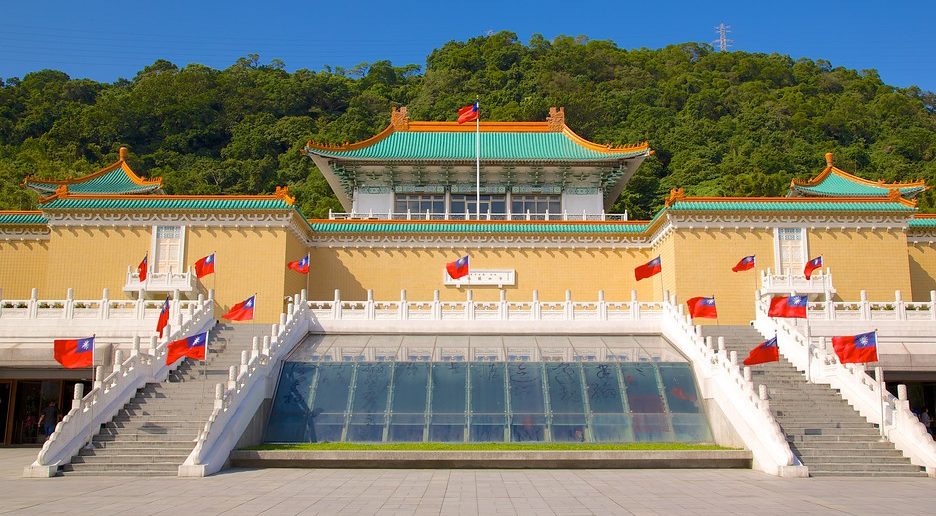
The National Palace Museum
- National Sun Yat-Sen Memorial Hall (Guólì Guófù Jìniànguǎn 國立國父紀念館): The Sun Yat-Sen monument celebrates his life; at the memorial there is a changing of the guard which is a highlight of the visit. You can take Line 5 blue to Sun Yat-sen Memorial Hall (國父紀念館) station.
- Longshan Temple (Lóngshān Sì龍山寺): is one of the most famous temples in Taiwan; Take Line 5 blue to Longshan Temple (龍山寺).
- Shung Ye Museum of Formosan Aborigines (Shùnyì Táiwān Yuánzhùmín Bówùguǎn 順益台灣原住民博物館): here you can learn about the history of Taiwan, which predates the influx of Han Chinese from mainland China. Today only 2% of the population live in the mountainous regions of the east coast. Shung Ye Museum is located next to the National Palace Museum.
- Ximending (西門町): is popular among the youth for fashion and subculture. The area surrounding Ximending is a hot bed for clubs, pubs and night entertainment. Get there via Line 5 blue or line 3 green to the Ximen (西門) stop.
- (Xin) Beitou baths(北投溫泉): in the centre of Taipei is perfect for rest and recuperation. If you can spend the night there. Get there via Line 2 red to Xinbeitou (新北投). Then spend the night in Beitou.
- Yongkang Street (Yǒngkāng Jiē永康街): is a must visit to eat food. Check out Din Tai Fung. Line 2 red or line 4 orange to Dongmen (東門).
- Yangmingshan National Park (Yángmíngshān陽明山): can be combed with Beitou and the baths as they are in the same area. Yangmingshan is perfect for outdoors types with parks, hiking trails, interesting plants and wildlife a plenty as well as internationally famous hot springs.
The Best of the Night Markets
- Shi-Da (師大) and Gongguan (公館): Close to the National Taiwan Normal University and Gongguan is a nearby neighborhood next to it, a lively place and a great stop for night life. Catch Line 3 green to Taipower Building Station (台電大樓) or the Gongguan (公館) stop.
- Raohe (饒河街觀光夜市): this market is excellent for food. Line 3 green to Songshan (松山).
- Shilin (士林夜市): is one of the most popular and crowded night markets. Good for food and shopping. Take line 2 red, but get off at Jiantan (劍潭).
- Huaxi (華西街觀光夜市): perfect for those in need of yummy snake soup. Line 5 blue to Longshan Temple (龍山寺).
Where to stay
Taipei has a host of accommodation options. When I visited Taipei I looked through a host of hotel options, and hostels. None came close however to the Love Hotels.
Love hotels offer quality accommodation at an affordable price. Just make sure you book them in advance as they are very popular.
In a love hotel you can find karaoke, jacuzzis, theme rooms, sexy-toys and of course privacy.

